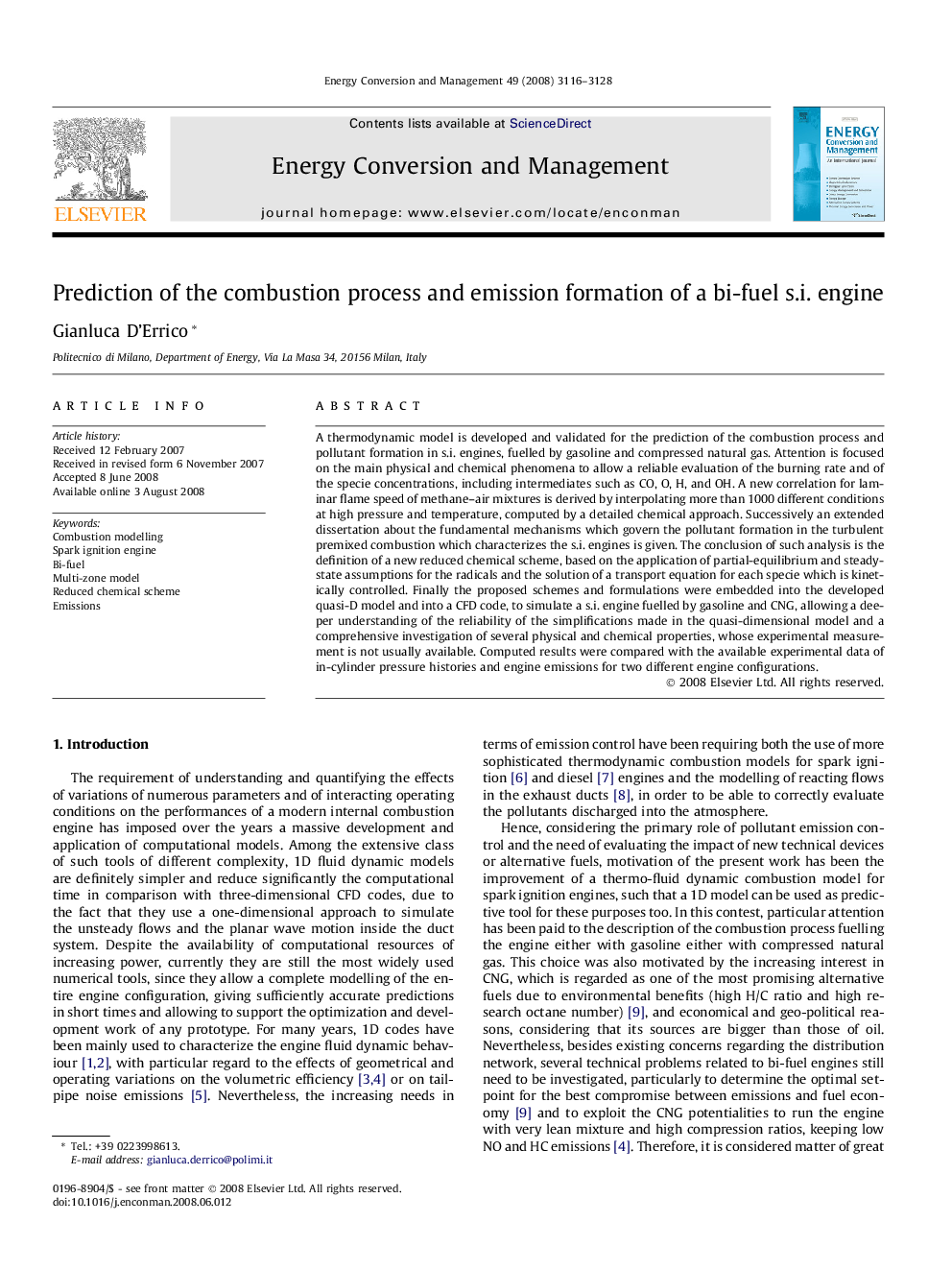| Article ID | Journal | Published Year | Pages | File Type |
|---|---|---|---|---|
| 766448 | Energy Conversion and Management | 2008 | 13 Pages |
A thermodynamic model is developed and validated for the prediction of the combustion process and pollutant formation in s.i. engines, fuelled by gasoline and compressed natural gas. Attention is focused on the main physical and chemical phenomena to allow a reliable evaluation of the burning rate and of the specie concentrations, including intermediates such as CO, O, H, and OH. A new correlation for laminar flame speed of methane–air mixtures is derived by interpolating more than 1000 different conditions at high pressure and temperature, computed by a detailed chemical approach. Successively an extended dissertation about the fundamental mechanisms which govern the pollutant formation in the turbulent premixed combustion which characterizes the s.i. engines is given. The conclusion of such analysis is the definition of a new reduced chemical scheme, based on the application of partial-equilibrium and steady-state assumptions for the radicals and the solution of a transport equation for each specie which is kinetically controlled. Finally the proposed schemes and formulations were embedded into the developed quasi-D model and into a CFD code, to simulate a s.i. engine fuelled by gasoline and CNG, allowing a deeper understanding of the reliability of the simplifications made in the quasi-dimensional model and a comprehensive investigation of several physical and chemical properties, whose experimental measurement is not usually available. Computed results were compared with the available experimental data of in-cylinder pressure histories and engine emissions for two different engine configurations.
